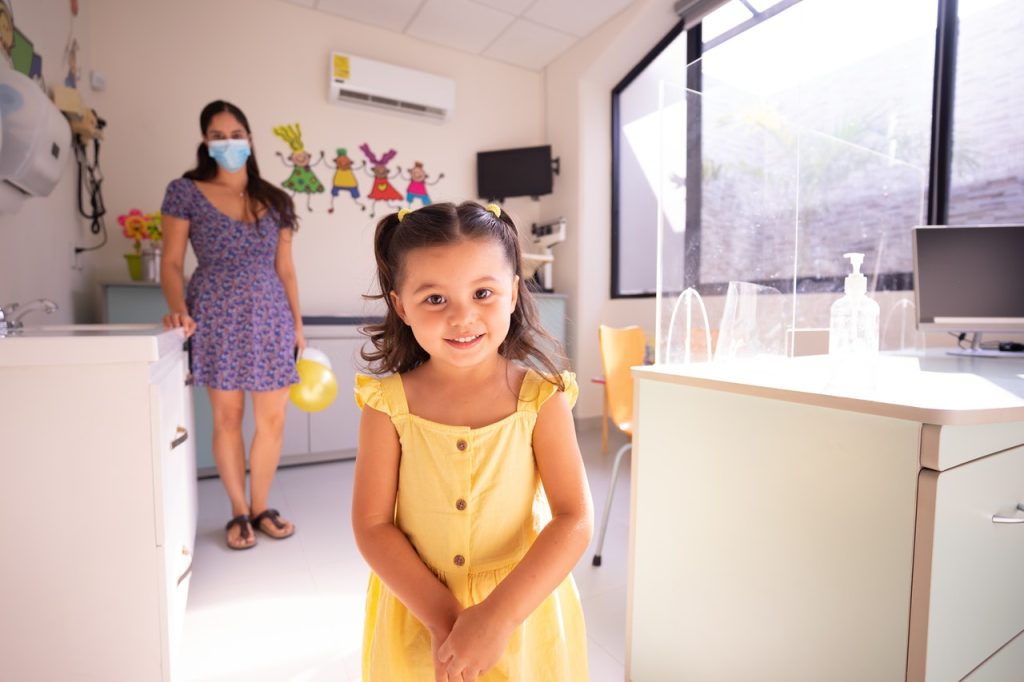
The White House vaccination plan aims to ensure that a vaccine, if authorized for children, is quickly distributed and made conveniently and equitably available to families across the country.
The White House has released its plan to vaccinate children between the ages of 5 and 11, pending authorization from the U.S. Food and Drug Administration (FDA) of the first COVID-19 vaccine for the age group.
The Biden administration announced that the plan will “ensure that, if a vaccine is authorized for children ages 5-11, it is quickly distributed and made conveniently and equitably available to families across the country.”
The administration says it has obtained enough COVID-19 vaccine to distribute Pfizer-BioNTech doses for the 28 million children in that age range.
This may be welcome news for families with some members who are vaccinated and others who previously were too young to receive their shots. For “mixed-vax” families, navigating public spaces could be a struggle.
Also, raising vaccination rates could help lower the risk of spreading the virus to our more vulnerable citizens.
“If we could get a majority of those children vaccinated, I think that would play a major role in diminishing the spread of infection within a community,” Dr. Anthony Fauci, director of the National Institute of Allergy and Infectious Diseases and the Chief Medical Advisor to President Biden, said during the White House briefing this week.
Millions of adolescents ages 12-17 have been safely vaccinated, and we know vaccines work. Fully vaccinated individuals are 10 times less likely to be hospitalized with COVID-19 and have a high degree of protection, including against the Delta variant. The consequences of a pediatric COVID-19 case can be serious and potentially last months.
White House Fact Sheet
Some of the plan’s highlights include:
Securing vaccine supply
If authorized by the FDA and recommended by the Centers for Disease Control and Prevention (CDC), children ages 5 to 11 will receive a dose and formula specific for their age group. The U.S. Department of Health and Human Services is working with states to make this vaccine supply available in communities across the country as rapidly as possible.
Vaccinating in trusted locations
The administration will partner with facilities providing the shots, including 25,000 pediatricians and primary care offices and more than 100 children’s hospitals. The goal is to work with the same doctors and facilities families have depended on as trusted sources amid the pandemic.
Educating and engaging parents
The Department of Health and Human Services will conduct a national public education campaign to reach parents and guardians so parents have the information they need to make informed choices for their families.
“These steps will be critical in ensuring that we are staying ahead of the virus by keeping kids and families safe, especially those at highest risk,” the White House said.
Dr. Robert L. Quigley M.D., an immunologist specializing in infectious disease and Global Medical Director of International SOS told SheKnows that “while cases are rarer, children can still transmit COVID-19 and even become very ill. Vaccinating children will help protect the people they spend the most time around, like parents, grandparents, and teachers who may not just be more vulnerable but immunocompromised.”
What’s next?
COVID-19 vaccines for children will be the focus of FDA and CDC meetings on Oct. 26 and Nov. 2-3, respectively. The White House says children will be ready to begin getting shots in arms the days following a final CDC recommendation. Fifteen million vaccines are prepared to ship in the first week alone.
Hiring a nanny?
Download Your Guide to Hiring a Nanny. In this guide, we lay out the steps on how to hire a nanny the right way and maintain a strong relationship with your employee.






 Get your free:
Get your free: